Thought of the Day

The dicitonary is the only place where success comes before work.


The dicitonary is the only place where success comes before work.

By AARON BEARD AP Sports Writer
CHAPEL HILL, N.C. (AP) — North Carolina will start South Alabama transfer Gio Lopez at quarterback against TCU on Monday in Bill Belichick’s college coaching debut.
Belichick announced that Lopez would start during a news conference Wednesday. The Tar Heels secured Lopez’s commitment after spring drills and he joined formal team workouts in preseason camp as the expected front-runner for the job.
Belichick — who led the NFL’s New England Patriots to six Super Bowl titles as a head coach — said Lopez had “made a ton of progress” and would get the majority of practice reps leading up to a college version of Monday Night Football against the Horned Frogs.
“I feel very comfortable with him and what he’s doing,” Belichick said. “But he’ll get better as we go forward because we just will — we have a lot of practices in front of us, and a lot of games in front of us, and we’ll all learn a lot from those.
“I think he’s ready. But I think he’ll be like everybody: more ready as we go forward.”
Lopez, a 6-foot redshirt sophomore, threw for 2,559 yards and 18 touchdowns while also running for 463 yards and seven scores last year at South Alabama.
“That’s what I came here for, of course,” Lopez said with a smile of winning the job.
UNC’s quarterback room included veteran Max Johnson, who was battling back from a serious leg injury suffered as the opening-game starter last year; along with freshmen Bryce Baker and Au’Tori Newkirk.
Lopez said he shared the news with his father before meeting with reporters.
“Talking to my dad, it was like, ‘Man, I’m going to be Coach Belichick’s first starting quarterback in college.’ It’s a great opportunity.”
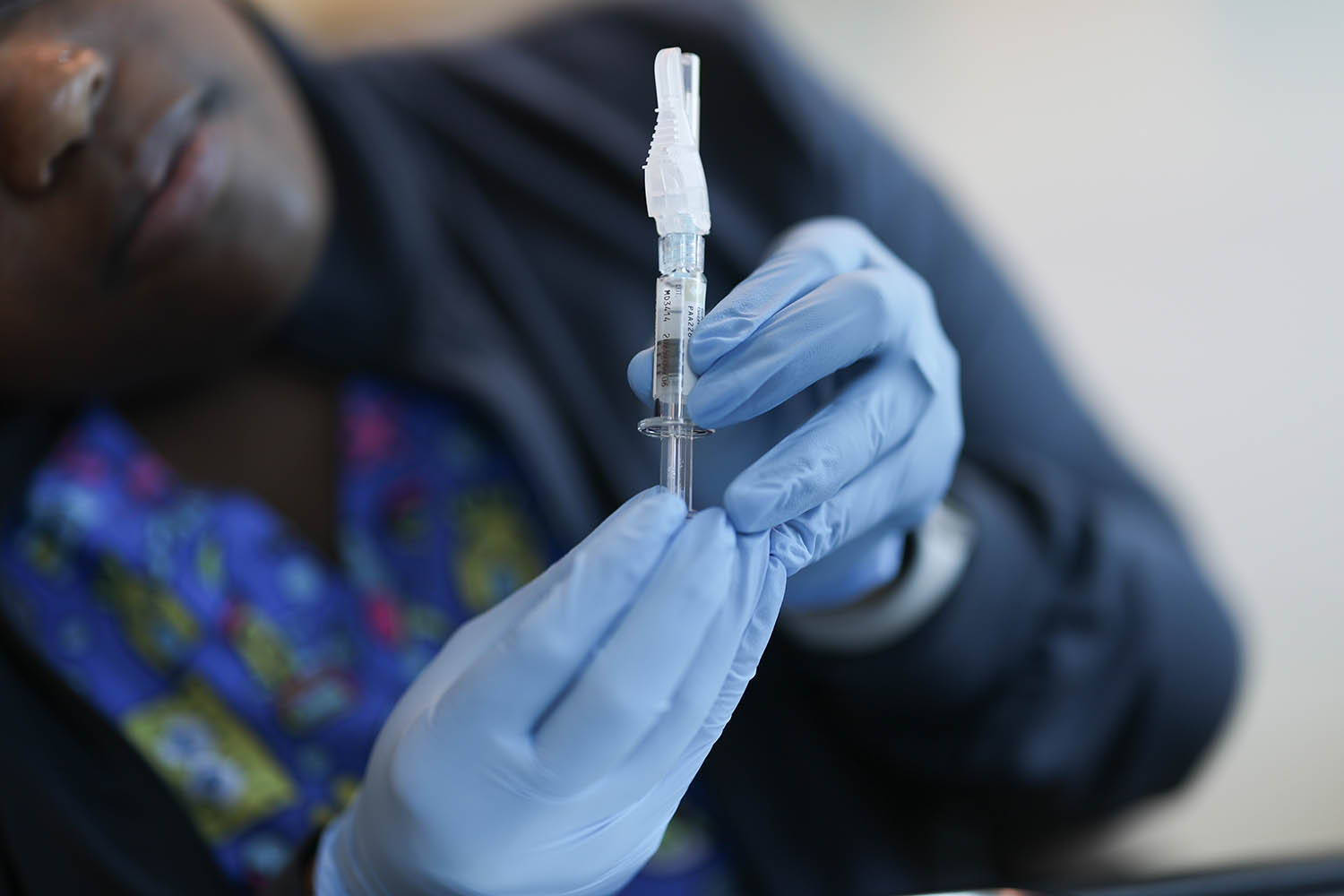
By MATTHEW PERRONE AP Health Writer
WASHINGTON (AP) — U.S. regulators approved updated COVID-19 shots Wednesday but limited their use for many Americans — and removed one of the two vaccines available for young children.
The new shots from Pfizer, Moderna and Novavax are approved for all seniors. But the Food and Drug Administration narrowed their use for younger adults and children to those with at least one high-risk health condition, such as asthma or obesity. That presents new barriers to access for millions of Americans who would have to prove their risk — and millions more who may want to get vaccinated and suddenly no longer qualify.
Additionally, Pfizer’s vaccine will no longer be available for any child under 5, because the FDA said it was revoking the shot’s emergency authorization for that age group.
Parents will still be able to seek out shots from rival drugmaker Moderna, the other maker of mRNA vaccines, which has full FDA approval for children as young as 6 months. But the company’s Spikevax vaccine is only approved for children with at least one serious health problem.
The revamped vaccines target a newer version of the continuously evolving virus and are set to begin shipping immediately. But it could be days or weeks before many Americans know if they’ll be able to get one, with access dependent on decisions by federal health advisers, private health insurers, pharmacies and state authorities.
The new restrictions — previewed by FDA officials in May — are a break from the previous U.S. policy, which recommended an annual COVID-19 shot for all Americans 6 months and up.
The approach reflects heightened skepticism about the ongoing risks of COVID-19 and the need for yearly booster shots from Health Secretary Robert F. Kennedy Jr. and FDA Commissioner Marty Makary, both outspoken critics of wide-scale vaccinations.
“The American people demanded science, safety, and common sense. This framework delivers all three,” Kennedy wrote on social media.
Novavax’s shot is only open to people 12 or older, not younger children, and under the same risk-based restrictions as are now in place for the Moderna and Pfizer options. It’s the nation’s only traditional, protein-based COVID-19 vaccine.
The limits “can’t help but create barriers to vaccinations” and cause confusion for patients, doctors and pharmacists, said Dr. William Schaffner, a Vanderbilt University vaccines expert.
Some medical groups, including the American Academy of Pediatrics, have objected to the new limits, saying they may block vaccine access for families who want to protect their children. Last week, the group offered its own recommendations for kids, saying annual shots are strongly recommended for children ages 6 months to 2 years and advised for older children.
In his post Wednesday, Kennedy said the shots will be “available for all patients who choose them after consulting with their doctors.”
But Americans are likely to confront a number of logistical hurdles.
Insurers typically base their vaccine coverage decisions on the recommendations of a panel of advisers to Centers for Disease Control and Prevention, but some say they will also look to medical professional groups, including the American Medical Association.
Earlier this year, Kennedy replaced the entire CDC panel, naming several doctors and researchers who have repeatedly questioned the safety of commonly used vaccines and ingredients. The panel is expected to meet in September, but no agenda has been released.
Depending on the panel’s advice, Americans under age 65 could be expected to provide documentation of a serious medical condition before they can get a shot. Complicating the rollout is the fact that pharmacists — who administer most COVID-19 shots — typically aren’t expected to collect that kind of information. And laws governing their ability to administer routine vaccinations vary by state, where pharmacists are licensed.
Many states limit vaccinations by pharmacists to those recommended by the CDC panel.
Access could also be complicated for healthy adults and children who are interested in getting a shot for extra protection.
If the latest vaccines aren’t covered by their insurance, those patients could be required to pay $150 or more out of pocket if they want one. If they aren’t considered high-risk, they might also have to find a doctor or other health professional willing to give the shot “off label.”
“This makes things much more complicated, and when things get complicated we see vaccine uptake go down,” said Andy Pekosz, a virologist at Johns Hopkins University.
The updated shots from Pfizer, Moderna and Novavax target coronavirus subtypes that are closely related to some newly emerging cousins. Pfizer and Moderna said they expect their shots to be available within days. Novavax’s vaccine is expected in the early fall, a spokesman said.
All three shots were initially made available under the FDA’s emergency use authorization, an expedited process to quickly review vaccines and other countermeasures during the pandemic. Pfizer had not yet sought full approval for its doses designed for children under 5, which is the reason that Moderna will be the only provider of shots for the youngest children this year.
In addition to revoking emergency use of Pfizer’s vaccine in young children, Kennedy said Wednesday the government also pulled remaining authorizations for all other COVID-19 vaccines and another therapy from the pandemic years, convalescent plasma, which was used to treat hospitalized COVID-19 patients before the first antiviral drugs became available.
COVID-19 vaccines do a good job preventing severe disease, hospitalization and death, which remain a bigger risk for seniors and people with underlying health factors, including heart disease, lung disease and cancer.
Preliminary data from the CDC estimates 47,500 Americans died from COVID-related causes last year. In at least two-thirds of those cases, COVID-19 was listed as the underlying cause of death. For the rest, COVID-19 was a contributing factor.
___
Associated Press journalists Mary Conlon, Lauran Neergaard and Mike Stobbe contributed to this story.
___
The Associated Press Health and Science Department receives support from the Howard Hughes Medical Institute’s Science and Educational Media Group and the Robert Wood Johnson Foundation. The AP is solely responsible for all content.

By DARLENE SUPERVILLE Associated Press
WASHINGTON (AP) — President Donald Trump’s administration is taking management of Union Station away from Amtrak in the latest example of the federal government exerting its power over the nation’s capital.
Transportation Secretary Sean Duffy announced the takeover Wednesday alongside Amtrak President Roger Harris at Washington’s main transportation hub during the launch of an updated version of the rail service’s Acela train.
Union Station, in walking distance from the Capitol, has “fallen into disrepair” when it should be a “point of pride” for the District of Columbia, Duffy said. He said the Republican administration’s move would help beautify the landmark in an economical way and was in line with Trump’s vision.
“He wants Union Station to be beautiful again. He wants transit to be safe again. And he wants our nation’s capital to be great again. And today is part of that,” Duffy said.
It’s Trump’s latest attempt to put the city under his control. In recent weeks, Trump has increased the number of federal law enforcement and immigration agents on city streets while also taking over the Metropolitan Police Department and activating thousands of National Guard members. Last week, Trump said he wants $2 billion from Congress to beautify Washington.
Duffy said the federal government can do a better job managing the train station and attract more tenants and generate more revenue that will be spent on upgrading the station, which opened in 1907. Since then, the cavernous Roman-columned building has been through multiple management changes and numerous ups and downs regarding its cleanliness, safety and state of repair.
National Guard troops have patrolled in and around Union Station ever since Trump announced the anti-crime effort this month. Vice President JD Vance and Defense Secretary Pete Hegseth were shouted down by opponents of the federal intervention when they visited with troops there last week.
Duffy had pressed Amtrak about crime at the station in a March letter to its chief operating officer and requested an updated plan on how it intended to improve public safety there.
The deputy transportation secretary, Steve Bradbury, cited a new roof and new public restrooms among $170 million in upgrades that he said are needed at the station.
Amtrak’s new high-speed train, the NextGen Acela, will start serving the Northeast Corridor on Thursday, said Harris, Amtrak’s president. The trains can travel at speeds of up to 160 mph, about 10 mph faster than the high-speed train it is replacing. Duffy and the Amtrak officials from the event boarded one of the new high-speed trains after the event for an inaugural ride to New York’s Penn Station.
Union Station has had a history of ups and downs during its nearly 120-year history.
In 1981, after rain started pouring through the ceiling, the National Park Service, which has jurisdiction over some of the area surrounding the station, declared the building unsafe. The station was closed for five years for renovation and President Ronald Reagan signed the Union Station Redevelopment Act to help fund and organize its comeback.
More recently, the building fell on relatively hard times during the COVID pandemic. Foot traffic plummeted after passengers shunned mass transit while multiple shops closed at the station. But the past three years have witnessed a bit of a comeback.
The station has occasionally been a magnet for homeless individuals seeking shelter inside or camping in tents on Columbus Circle in front of the building. The proliferation of tents prompted the Park Service to clear the encampment in front of the station in June 2022.
Control and management of the physical building also have shifted over the years.
—-
Associated Press writer Ashraf Khalil contributed to this report.
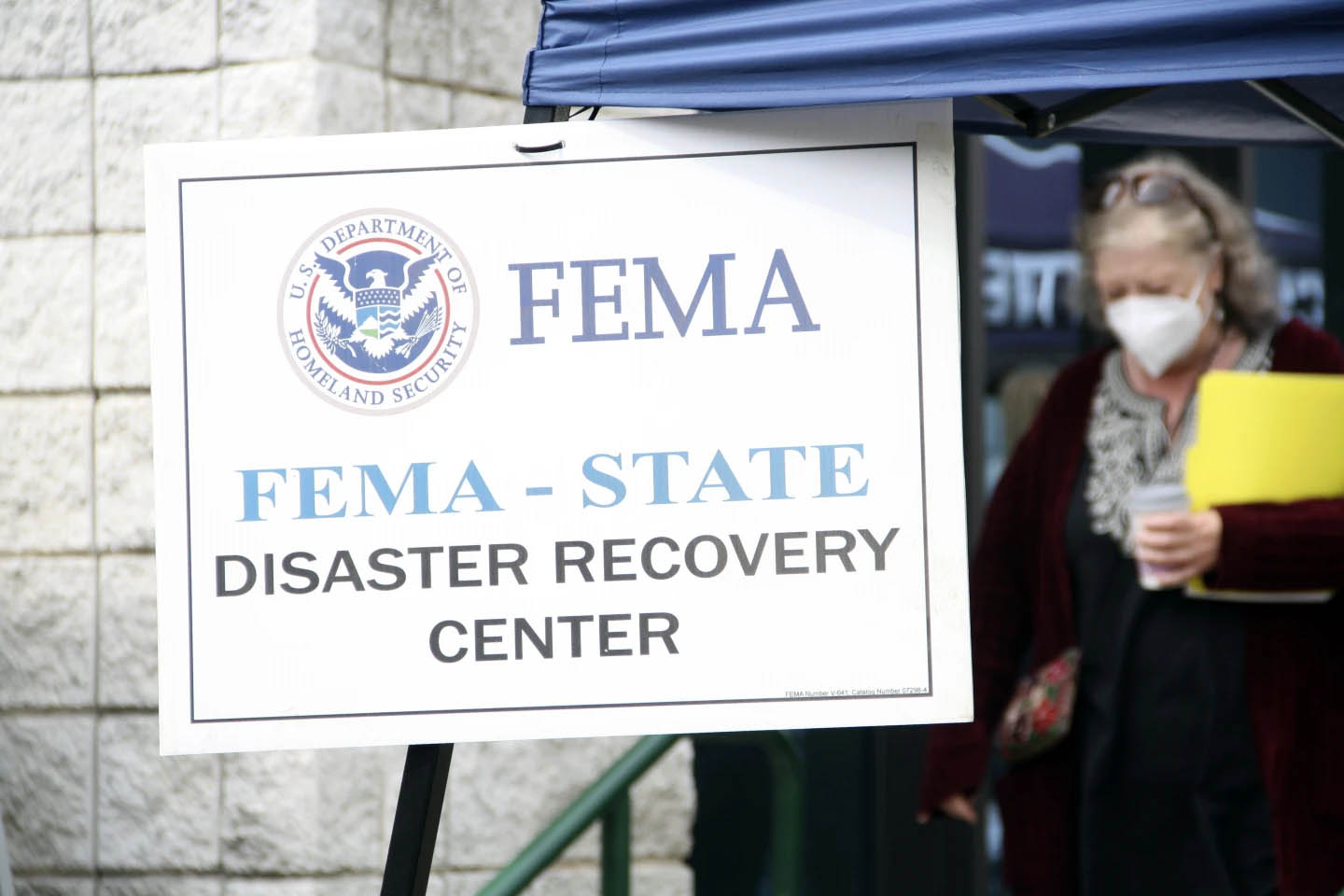
By GABRIELA AOUN ANGUEIRA Associated Press
Some employees of the Federal Emergency Management Agency who signed a public letter of dissent earlier this week were put on administrative leave Tuesday evening, according to documents reviewed by The Associated Press.
More than 180 current and former FEMA employees signed the letter sent to the FEMA Review Council and Congress on Monday critiquing recent cuts to agency staff and programs, and warning that FEMA’s capacity to respond to a major disaster was dangerously diminished.
Thirty-five signed their names while 141 signed anonymously for fear of retribution.
The Associated Press has confirmed that at least two of the signatories received notices Tuesday evening informing them they would be placed on leave indefinitely, with pay and that they must still check in every morning confirming their availability. It was unclear what the status was for other signatories.
The notice said the decision “is not a disciplinary action and is not intended to be punitive.”
FEMA did not respond immediately to questions about how many staff received the notice and whether it was related to the opposition letter.
The Washington Post first reported that some FEMA employees were being put on leave.
The dissent letter contained six “statements of opposition” to current policies at FEMA, including an expenditure approval policy by which Homeland Security Secretary Kristi Noem must approve contracts exceeding $100,000, which the signatories said reduces FEMA’s ability to perform its mission.
It also critiqued the DHS decision to reassign some FEMA employees to Immigration and Customs Enforcement, the failure to appoint a qualified FEMA administrator as stipulated by law, and cuts to mitigation programs, preparedness training and FEMA workforce.
In an email Monday, FEMA spokesperson Daniel Llargues said that the Trump administration “has made accountability and reform a priority so that taxpayer dollars actually reach the people and communities they are meant to help.”
“It is not surprising that some of the same bureaucrats who presided over decades of inefficiency are now objecting to reform,” Llargues said. “Change is always hard.”
Employees at other agencies including the National Institutes of Health and Environmental Protection Agency have issued similar statements. About 140 EPA staff members at the were placed on administrative leave for signing an opposition letter.
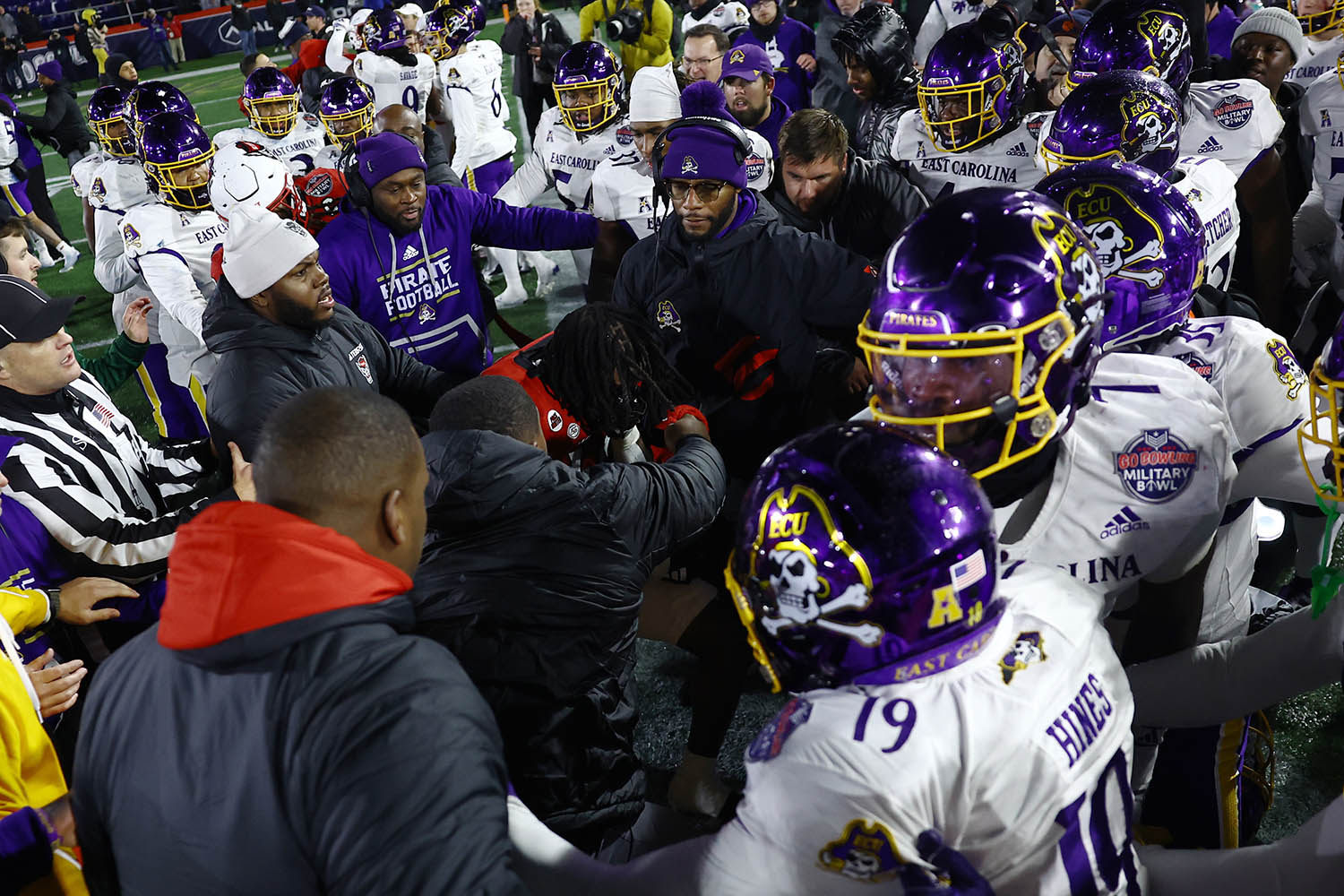
East Carolina at N.C. State, Thursday, 7 p.m. EDT.
BetMGM College Football Odds: N.C. State by 11 1/2.
How to watch: ACC Network.
ECU (2024):
Overall offense: 436.4 yards per game (24th in FBS)
Passing: 264.0 yards per game (27th)
Rushing: 172.4 yards per game (50th)
Scoring: 32.0 points per game (34th)
Overall defense: 405.2 yards allowed per game (100th in FBS)
Passing: 235.3 yards allowed per game (96th)
Rushing: 169.8 yards allowed per game (94th)
Scoring: 27.3 points allowed per game (83rd)
N.C. State (2024):
Overall offense: 377.8 yards per game (76th in FBS)
Passing: 232.6 yards per game (58th)
Rushing: 145.2 yards per game (83rd)
Scoring: 28.5 points per game (62nd)
Overall defense: 390.8 yards allowed per game (88th in FBS)
Passing: 233.8 yards allowed per game (93rd)
Rushing: 157.0 yards allowed per game (79th)
Scoring: 30.2 points allowed per game (104th)
ECU (2024)
Passing: Katin Houser, 2,006 yards, 18 TDs, 11 INTs, 60.8 completion percentage
Rushing: London Montgomery, 359 yards, two TDs
Receiving: Anthony Smith, 799 yards, 41 catches, six TDs
N.C. State (2024)
Passing: CJ Bailey, 2,413 yards, 17 TDs, 10 INTs, 64.9 completion percentage
Rushing: Hollywood Smothers, 571 yards, six TDs
Receiving: Justin Joly, 661 yards, four TDs
East Carolina beat N.C. State 26-21 in the Military Bowl to end last season in a game that included a late on-field brawl. N.C. State finished 6-7, while ECU went 8-5.
East Carolina has its home opener Sept. 6 against Campbell.
N.C. State will host Virginia on Sept. 6 in an unusual scenario: a meeting of Atlantic Coast Conference teams that won’t count in the league standings. The schools added that game to fill a nonconference spot in the schedule rather than being paired through the league’s scheduling model.

This orzo pasta recipe is the perfect quick and easy comfort food. It’s warm and cozy and full of flavor.
1. Prepare the base
Melt the butter in a large pot over medium-high heat. Add the oil and garlic and sauté for a minute or so, until the garlic is slightly toasted.
2. Add the pasta
Combine the lemon zest and uncooked orzo and reduce the heat to medium low. Cook for 2 to 3 minutes, stirring frequently until some of the pasta is slightly toasted and brown.
3. Add the liquids
Add the broth and lemon juice to the mixture and bring to a boil. Reduce to a simmer and cook for 10 to 12 minutes, stirring often to make sure the orzo doesn’t stick. When the orzo is al dente and most of the broth has been absorbed, it’s done!
4. Dress it up
Incorporate the spinach, heavy cream and parmesan cheese and stir together until the spinach is wilted and the orzo is creamy. Season with salt, pepper and red pepper flakes.
5. Serve it hot
Serve immediately and enjoy the coziness!


Time is like the ocean, always there, always different.
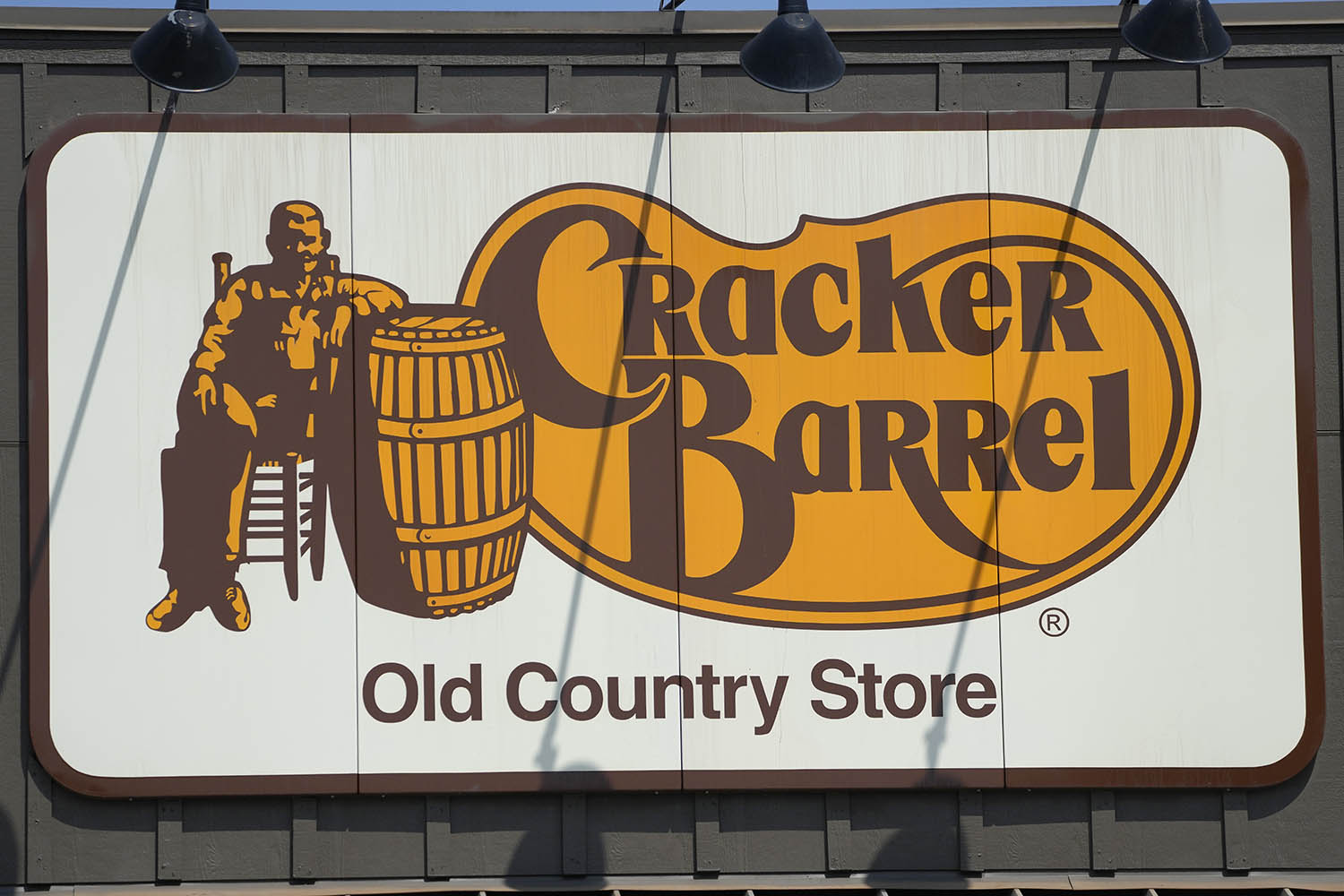
By DEE-ANN DURBIN AP Business Writer
Cracker Barrel said late Tuesday it’s returning to its old logo after critics — including President Donald Trump — protested the company’s plan to modernize.
In a post on its website, Cracker Barrel said it will retain its old logo, which features an older man in overalls sitting next to a barrel and the words “Old Country Store.”
“We thank our guests for sharing your voices and love for Cracker Barrel,” the company said in a statement. “Our new logo is going away and our ‘Old Timer’ will remain.”
The tempest over the logo began last week, when the company announced plans for a simplified design featuring only the company’s name. Lebanon, Tennessee-based Cracker Barrel, which has 660 restaurants in 43 states, made the change as part of a wider plan to modernize its restaurants and appeal to younger customers.
The chain’s sales have been slipping as it faces growing competition from breakfast chains and others. In its 2024 fiscal year, Cracker Barrel’s same-store sales, or sales at locations open at least a year, dropped 0.1% despite a 4.9% increase in menu prices. Same-store retail sales at its shops fell 5.5%.
But many protested the change. On Monday, Cracker Barrel put out an apologetic statement, saying it “could have done a better job sharing who we are and who we’ll always be.”
At that point, Cracker Barrel didn’t say it would change the logo, but said it would listen to its customers and keep many of the things they have come to love about the restaurant, like the rocking chairs on its front porches. The company said it would continue to honor Uncle Herschel — the older man in its logo, who represents the uncle of Cracker Barrel’s founder — on its menu and on items sold in its stores.
But the controversy continued. On Tuesday morning, Trump said via Truth Social that Cracker Barrel “should go back to the old logo, admit a mistake based on customer response (the ultimate Poll), and manage the company better than ever before.” Cracker Barrel’s shares rose after more than a week of declines.
By Tuesday evening, Cracker Barrel had made its decision and scrapped the new logo.
“At Cracker Barrel, it’s always been – and always will be – about serving up delicious food, warm welcomes, and the kind of country hospitality that feels like family,” the company said. “As a proud American institution, our 70,000 hardworking employees look forward to welcoming you to our table soon.”
Trump was among those celebrating the move.
“Good luck into the future. Make lots of money and, most importantly, make your customers happy again!” Trump said via Truth Social.
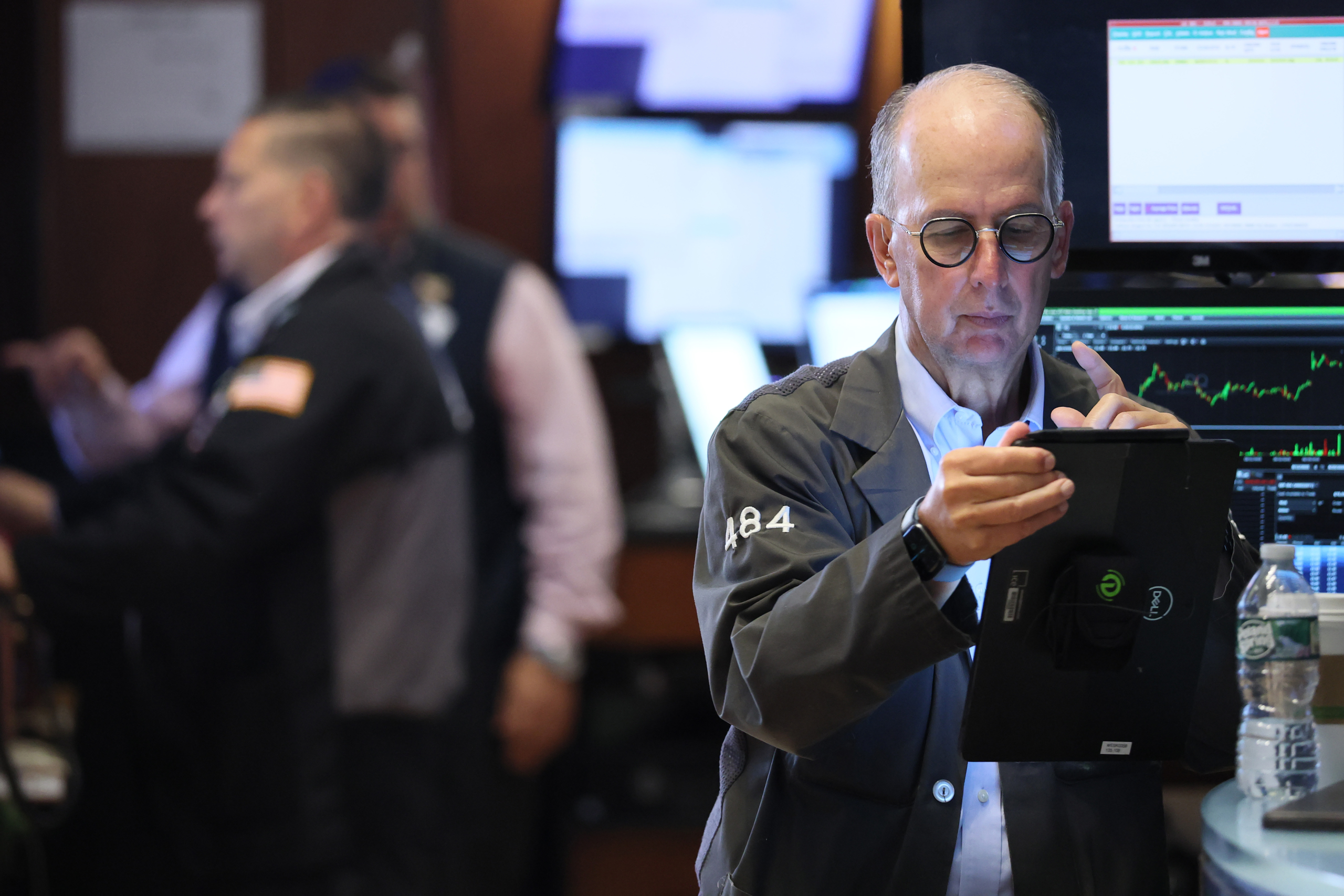
By DAMIAN J. TROISE and ALEX VEIGA AP Business Writers
Wall Street capped a choppy day of trading Tuesday with slight gains for stocks, leaving the major indexes just below their recent all-time highs.
The S&P 500 closed 0.4% higher after wavering between small gains and losses for much of the day. The benchmark index finished just 2.6 points below its record high set earlier this month and short of recouping all of its losses from the day before.
The Dow Jones Industrial Average also bounced back from an early slide, finishing with a 0.3% gain. The Nasdaq composite added 0.4%.
The market’s uneven start to the week comes after Wall Street notched big gains last week on hopes for interest rate cuts from the Federal Reserve.
Gains in technology, financial and industrial stocks helped outweigh losses in communication services and other sectors. Chipmaking giant Nvidia rose 1.1% and JPMorgan Chase added 1.2%.
Boeing rose 3.5% for one of the biggest gains among S&P 500 companies after Korean Air announced a $50 billion deal with the company that includes buying more than 100 aircraft. Dish Network parent EchoStar surged 70.2% after AT&T said it will buy some of its wireless spectrum licenses in a $23 billion deal.
Treasury yields mostly fell in the bond market. The yield on the 10-year Treasury fell to 4.26% from 4.28% late Monday.
The broader market remained subdued following President Donald Trump’s escalation of his fight with the Federal Reserve. On Monday, he said that he’s removing Federal Reserve Governor Lisa Cook. Cook’s lawyer said she’ll sue Trump’s administration to try to prevent him from firing her.
It marks the latest escalation in his dispute with the central bank over its cautious interest rate policy. The Fed has held rates steady since late 2024 over worries that Trump’s unpredictable tariff policy will reignite inflation. Trump has also threatened to fire Fed Chair Jerome Powell, often taunting him with name-calling. Still, he is only one of 12 votes that decides interest rate policy.
“We will continue to monitor rising political pressure on the Fed but expect its decision-making to remain guided by its mandate in the near term,” said Ulrike Hoffmann-Burchardi, chief investment officer for the Americas and global head of equities at UBS Global Wealth Management.
Wall Street is still betting that the Fed will trim its benchmark interest rate at its next meeting in September. Traders see an 87% chance that the central bank will cut the rate by a quarter of a percentage point, according to data from CME Group.
The two-year Treasury yield, which more closely tracks expectations for Fed action, slipped to to 3.68% from 3.73% late Friday.
The Federal Reserve spent much of the last several years fighting rising inflation by raising interest rates. It managed to mostly tame inflation and avoided having those higher rates stall economic growth, thanks largely to strong consumer spending and a resilient job market.
The Fed started shifting its policy by cutting its benchmark interest rate late in 2024 as the rate of inflation neared its target of 2%. It decided to hit the pause button heading into 2025 over concerns that Trump’s unpredictable tariff policy could reignite inflation. Lower interest rates make borrowing easier, helping to spur more investment and spending, but that could also potentially fuel inflation.
The Fed and Wall Street will get another update on inflation Friday, when the U.S. releases the personal consumption expenditures index. Economists expect it show that inflation remained at about 2.6% in July, compared with a year ago. Businesses have been warning investors and consumers about higher costs and prices because of tariffs.
The Fed has recently become more worried about the state of the employment market, which has shown signs of weakening. Aside from keeping inflation in check, the central bank is tasked with using its tools to help maintain a healthy job market. It will get another big update on the employment market in early September, ahead of its next policy meeting.
Consumer confidence declined modestly in August as anxiety over a weakening job market grew for the eighth straight month. The small decline from the Conference Board’s monthly survey was mostly in line with economists’ projections.
Crude oil prices fell. European and Asian markets closed lower.
All told, the S&P 500 rose 26.62 points to 6,465.94. The Dow gained 135.60 points to 45,418.07, and the Nasdaq added 94.98 points to 21,544.27.